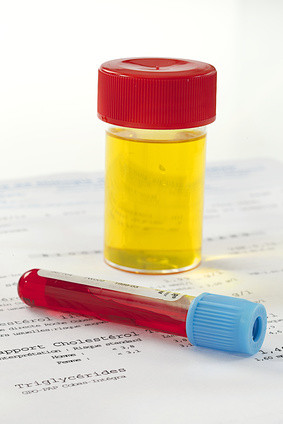
School was easy as a young child. All you needed to know was your ABC’s. Now as a nursing student, they must build on that and now know your CBC’s, LFT’s, and BMP’s!
Fluids and Electrolytes (F&E) is a challenging subject for most students because it requires application of chemistry, acid/base knowledge, and physiology. It is foundational to practice and must be DEEPLY understood by every student so that this knowledge can be used/applied at the bedside.
Why Must Labs Be Understood
Laboratory values provide an EARLY window to physiologic status changes that may not be initially evident in vital signs or assessment data collected by the nurse.
Examples of this in clinical practice are TRENDS of an elevated serum lactate in any shock state, elevated neutrophils, bands, or WBC’s that are typically seen in sepsis, or elevated serum creatinine in acute renal failure or severe dehydration.
Students must be able to APPLY knowledge to practice by identifying the most important labs for each patients and WHY they are relevant and then use this knowledge to clinically reason to accurately grasp the essence of the current situation.
Proactive vs. Reactive Nurse
Students must also be able to USE this knowledge to recognize basic clinical relationships, such as which electrolytes most likely to be depleted with diuresis when furosemide is given. When students have this level of understanding,they will be a PROACTIVE nurse in practice who will anticipate what to expect, and understand WHY.
In comparison, students who are unable or who have not been taught to contextualize content at this level will be REACTIVE nurses in practice. They will likely respond only AFTER a problem has developed, and recognize it LATER rather than sooner.
Their patients will be more likely to experience adverse outcomes because of the nurse’s delayed reaction or complete failure to rescue.
Danger…TMI in Clinical!
Once students are in the clinical setting, content overload is a given! They will encounter an overwhelming amount of clinical data in the medical record. Patricia Benner’s novice-to-expert research identified that because new nurses have a lack of knowledge and clinical experience, they struggle with identifying the most important data in the clinical setting and tend to see EVERYTHING as equally relevant (Benner, 1982)! This includes the numerous lab values found in the most commonly ordered lab panels.
Routine laboratory panels are difficult for students to sort through because of the sheer amount of data. Students will have difficulty identifying the most important labs and values relevant to the primary problem.
For example, a basic metabolic panel (BMP) is the most commonly ordered lab panel and has the following 10 lab values:
- Sodium
- Potassium
- Chloride
- Carbon dioxide (CO2-bicarb)
- Glucose
- Blood urea nitrogen (BUN)
- Creatinine
- Glomerular filtration rate (GFR)
- BUN/creatinine ratio
- Anion gap
Do every one of these lab values have equal relevance and importance to nursing practice? I would emphatically state NO.
From my perspective, I could easily filter half of these lab values in a BMP as NEED to know and emphasize them as relevant to nursing practice. The other half of these values are NICE to know and will have at times situational relevance, but do not need to be considered for most patients.
As I reflected upon the filtering of clinical data that I use in practice, I have noted that there are lab values that I consider ALWAYS relevant because of their physiologic importance and relevance to homeostasis and well-being.
As a clinical educator, I helped my students determine relevance by compiling a SHORT list of lab values that have universal relevance. If they are present in the medical record, they MUST be seen as clinically significant and noted even if they are normal.
In addition, students need to be guided to recognize what crucial assessments are required and develop a lab “plan of care” around abnormal, relevant labs. (See my past blog “Power of a Bad Lab to Develop Plan of Care”
Abnormal Does NOT=RELEVANT
Students tend to think that it is only the ABNORMAL labs that are significant and must be noted. But if a lab value is ALWAYS relevant, even if it is normal, it has clinical significance because of its importance and what it represents.
For example, a normal WBC and neutrophil count after surgery represents the absence of a systemic infectious or inflammatory response.
Always Relevant BMP Values
I have compiled my list of always-relevant lab values that provide a foundation for novice nurses to build upon. If present in the chart, my students were expected to note these lab values and more importantly to TREND the direction they were going over the last day or two. TRENDING relevant data is also an essential component of clinical reasoning.
Though each of the labs have significance, it is dependent on the primary problem and depends. To keep it simple for students, from my lens of clinical practice the following four labs are on my short list and must always be noted by the nurse:
1. Potassium (3.5-5.0 mEq/L)
- Essential to normal cardiac electrical conduction. If too high or low, can predispose to rhythm changes that can be life threatening! Potassium tends to deplete more quickly with loop diuretic usage than magnesium
2. Sodium (135-145 mEq/L)
- I consider sodium the fluid balance “Crystal-Light®” electrolyte. Though this is simplistic, it does help to understand in principle how basic sodium is to fluid balance. When you add one small packet of Crystal Light to a 16-ounce bottle of water, the concentration is just right. This is where a normal sodium will be (135–145).
- Where free water goes, sodium will follow to a degree. Therefore, if there is a fluid volume deficit due to dehydration, sodium will typically be elevated because it’s concentrated (less water in the bottle!). If there is fluid volume excess, sodium will be diluted and will likely be low (too much water in the bottle!). It is the “foundational” fluid balance electrolyte!
3. Glucose (Fasting: 70-110 mg/dL)
- Required fuel for metabolism for every cell in the human body, especially the brain.
- Relevant with history of diabetes or stress hyperglycemia due to illness. Elevated levels post-op can increase risk of infection/sepsis.
4. Creatinine (0.6-1.2 mg/dL)/Glomerular Filtration Rate (GFR) (>60 mL/minute)
- GOLD STANDARD for kidney function and adequacy of renal perfusion. The functioning of the renal system impacts every body system; therefore, it is ALWAYS relevant!
- When creatinine is elevated, this can be due to damage done to the fragile capillary membrane screen of the glomerulus which is like a screen door with larger holes that are letting things through that they shouldn’t, such as protein and glucose.
Emphasize NEED to Know Content
in order to strengthen student learning, they must acquire a deep understanding of what is most important. Therefore, emphasize these always relevant lab values so students know where to begin as they dig into each patient chart and face numerous lab values.
This will also enable them to identify the why or rationale and be able to acquire the needed critical thinking by using and applying this to practice.
Do you prepare your students for your clinical rotation by identifying the most important lab values before the first clinical?
I would encourage every clinical nurse educator to identify the top 5 to 10 laboratory values in that specific setting or clinical rotation, and then have students use their lab manuals to identify the norms, clinical red flag values, and physiology, as well as essential nursing assessments for the most important labs.
In Closing
Nursing education is in need of radical transformation (Benner, Leonard, Sutphen, & Day, 2010). TMI remains an ongoing challenge in both the clinical and classroom settings.
In order to realize this needed change, one simple step that every nurse educator can implement is to emphasize what lab values are most important so students obtain a deep understanding that will translate to the beside.
By acquiring this needed level of understanding, the critical thinking as well as clinical reasoning of students will be strengthened which will not only prepare them for the NCLEX®, but more importantly real-world clinical practice!
What do you think?
What lab values are most important in your clinical setting? How do you prepare your students to acquire deep learning of lab values that are most important?
Comment below and let the conversation begin!References
- Benner, P. (1982). From novice to expert. American Journal of Nursing, 82(3), 402–407.
- Benner, P., Sutphen, M., Leonard, V., & Day, L. (2010). Educating nurses: A call for radical transformation. San Francisco, CA: Jossey-Bass.
- Van Leeuwen, A. & Poelhuis-Leth, D. J. (2009). Davis’s comprehensive handbook of laboratory and diagnostic tests with nursing implications. (3rd ed.). Philadelphia, PA: F.A. Davis Company.
Keith Rischer – PhD, RN, CEN
As a nurse with over 35 years of experience who remained in practice as an educator, I’ve witnessed the gap between how nursing is taught and how it is practiced, and I decided to do something about it! Read more…
The Ultimate Solution to Develop Clinical Judgment Skills
KeithRN’s Think Like a Nurse Membership
Access exclusive active learning resources for faculty and students, including KeithRN Case Studies, making it your go-to resource.



